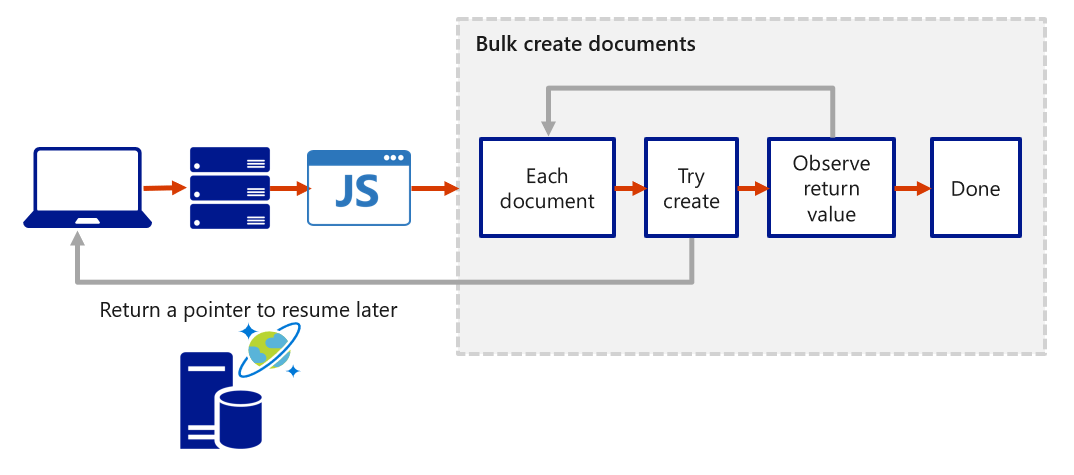Create stored procedures
Azure Cosmos DB provides language-integrated, transactional execution of JavaScript that lets you write stored procedures, triggers, and user-defined functions (UDFs). To call a stored procedure, trigger, or user-defined function, you need to register it. For more information, see How to work with stored procedures, triggers, user-defined functions in Azure Cosmos DB.
Note
This unit focuses on stored procedures, the following unit covers triggers and user-defined functions.
Writing stored procedures
Stored procedures can create, update, read, query, and delete items inside an Azure Cosmos container. Stored procedures are registered per collection, and can operate on any document or an attachment present in that collection.
Here's a simple stored procedure that returns a "Hello World" response.
var helloWorldStoredProc = {
id: "helloWorld",
serverScript: function () {
var context = getContext();
var response = context.getResponse();
response.setBody("Hello, World");
}
}
The context object provides access to all operations that can be performed in Azure Cosmos DB, and access to the request and response objects. In this case, you use the response object to set the body of the response to be sent back to the client.
Create an item using stored procedure
When you create an item by using a stored procedure, the item is inserted into the Azure Cosmos DB container and an ID for the newly created item is returned. Creating an item is an asynchronous operation and depends on the JavaScript callback functions. The callback function has two parameters: one for the error object in case the operation fails, and another for a return value, in this case, the created object. Inside the callback, you can either handle the exception or throw an error. If a callback isn't provided and there's an error, the Azure Cosmos DB runtime throws an error.
The stored procedure also includes a parameter to set the description as a boolean value. When the parameter is set to true and the description is missing, the stored procedure throws an exception. Otherwise, the rest of the stored procedure continues to run.
This stored procedure takes as input documentToCreate, the body of a document to be created in the current collection. All such operations are asynchronous and depend on JavaScript function callbacks.
var createDocumentStoredProc = {
id: "createMyDocument",
body: function createMyDocument(documentToCreate) {
var context = getContext();
var collection = context.getCollection();
var accepted = collection.createDocument(collection.getSelfLink(),
documentToCreate,
function (err, documentCreated) {
if (err) throw new Error('Error' + err.message);
context.getResponse().setBody(documentCreated.id)
});
if (!accepted) return;
}
}
Arrays as input parameters for stored procedures
When defining a stored procedure in the Azure portal, input parameters are always sent as a string to the stored procedure. Even if you pass an array of strings as an input, the array is converted to string and sent to the stored procedure. To work around this, you can define a function within your stored procedure to parse the string as an array. The following code shows how to parse a string input parameter as an array:
function sample(arr) {
if (typeof arr === "string") arr = JSON.parse(arr);
arr.forEach(function(a) {
// do something here
console.log(a);
});
}
Bounded execution
All Azure Cosmos DB operations must complete within a limited amount of time. Stored procedures have a limited amount of time to run on the server. All collection functions return a Boolean value that represents whether that operation completes or not
Transactions within stored procedures
You can implement transactions on items within a container by using a stored procedure. JavaScript functions can implement a continuation-based model to batch or resume execution. The continuation value can be any value of your choice and your applications can then use this value to resume a transaction from a new starting point. The following diagram depicts how the transaction continuation model can be used to repeat a server-side function until the function finishes its entire processing workload.
